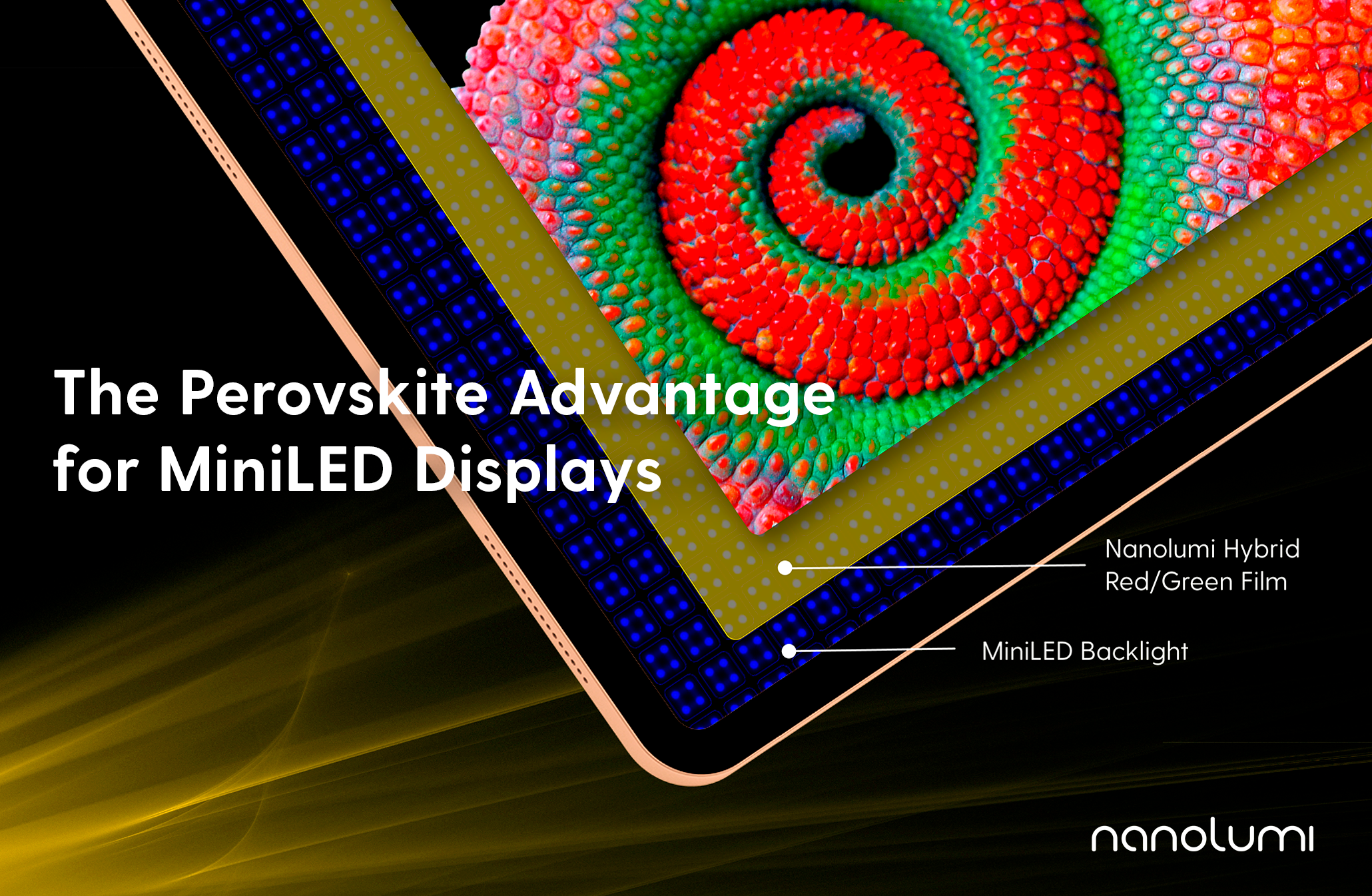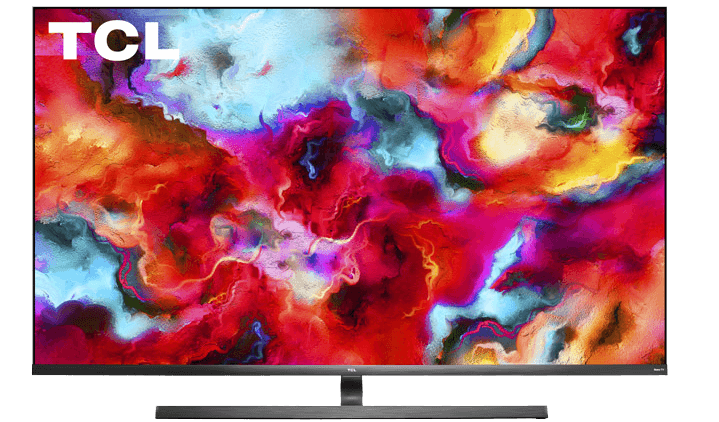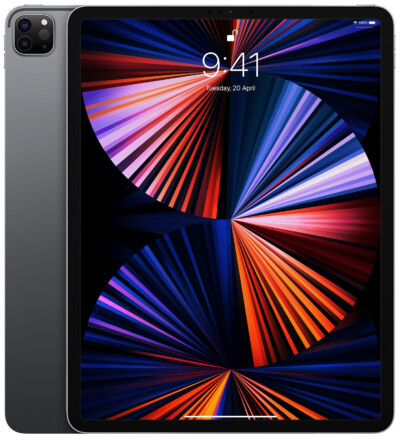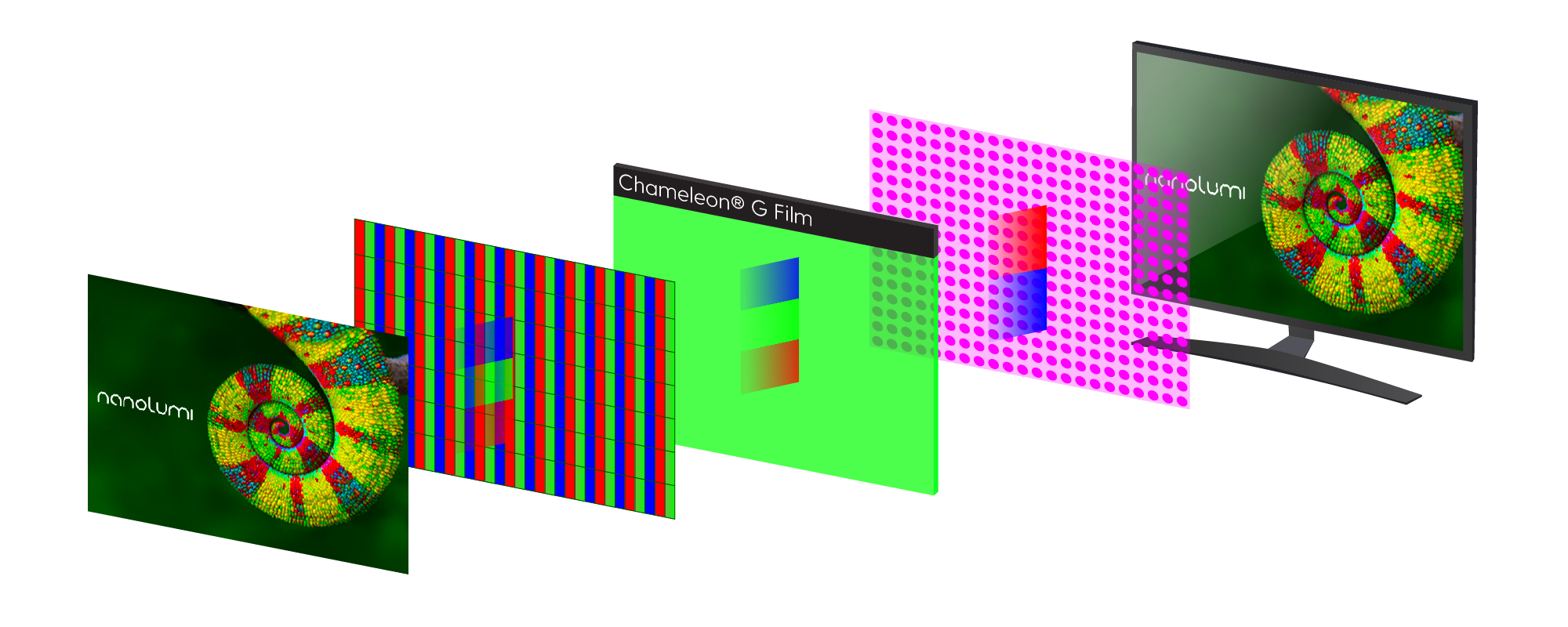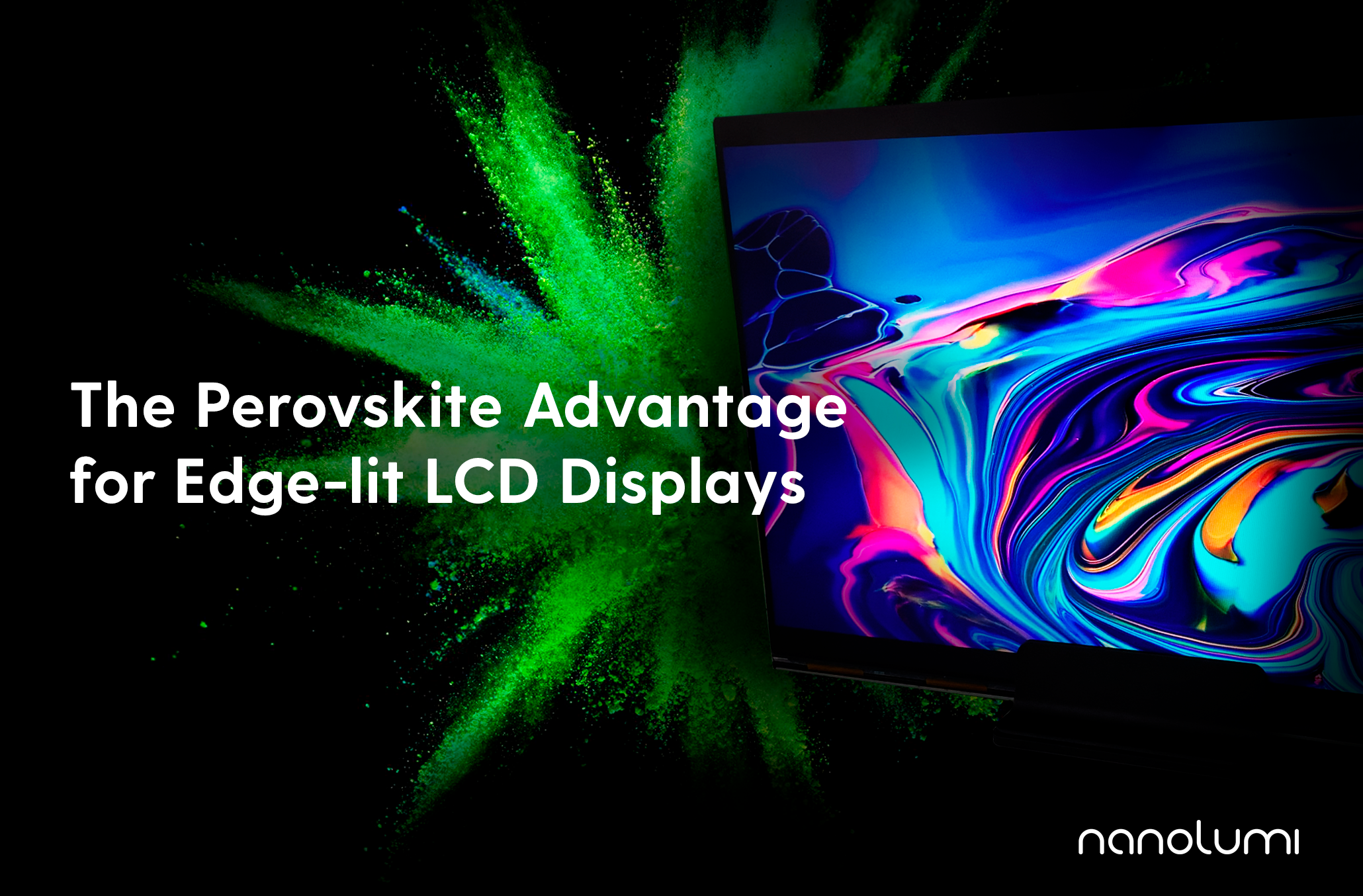Good things come in small packages, and this could not be more true for miniLED displays.
MiniLED was the most widely covered display technology at CES 2020; Despite our battle with a global pandemic, which impacted supply chains across the displays industry, it did not deter development nor dampen enthusiasm around miniLEDs.
2021 is the year miniLEDs will see its highest growth in history, and we don’t have to look much further than last week’s virtual Display Week 2021 to know this is true.
Display Supply Chain Consultants (DSCC) shared at the SID/DSCC Business Conference that they are “expecting miniLEDs to overtake OLEDs in TV, monitors, notebooks and tablets”:
2021: OLED displays lead miniLED displays by 15M units to 9M units, but the gap narrows.
2022: MiniLEDs catches up to OLEDs with each technology reaching 20M units each.
2023: MiniLEDs surpass OLEDs and continue to grow faster reaching 62M in 2025 while OLEDs hit 38 million.

Source: Display Supple Chain Consultants (DSCC)
BOE Technology was awarded ‘SID Best New Display Technology’ for its 0.9mm-pitch chip-on-glass active-matrix miniLED display. BOE also showed off its 75” 8K miniLED product with more than 5,000 local dimming zones and a million-level contrast ratio.
TCL Q8 Series MiniLED TV was awarded ‘SID Display of the Year’. With a 75” LCD panel, 8K retina resolution, over 25,000 miniLEDs grouped into 1000 local dimming zones and over 33M pixels, this is the world’s first TV with miniLED technology and sets a new wide colour gamut standard for TVs with 97.8% DCI-P3 coverage. TCL also showcased a 142” active-matrix IGZO miniLED display, a 17.3” 4K miniLED notebook offering 1000 nits peak brightness, and a 13.3” miniLED tablet covering 99% DCI-P3 and 1000 nits peak brightness.
Image Source: TCL
A miniLED tablet from TCL should come as no surprise after Apple debuted the world’s first miniLED tablet in April 2021, a new iPad Pro model with a 12.9” liquid retina XDR display, faster M1 chip, 1600 nits peak brightness and over 10,000 miniLEDs grouped into >2500 local dimming zones.
Image Source: Apple
MSI announced the world’s first miniLED laptop at CES 2020; The MSI Creator 17 offers 100% DCI-P3 coverage, 1000 nits peak brightness and 240 local dimming zones.
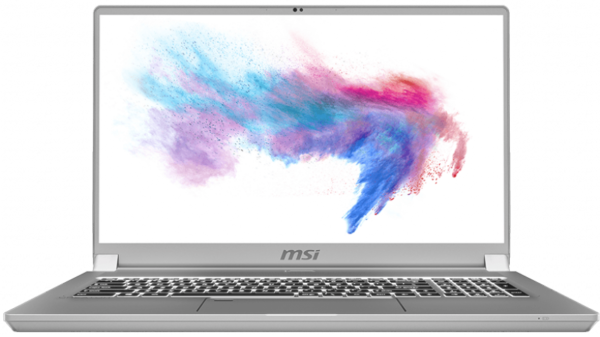
Image Source: MSI
ASUS announced the world’s first miniLED gaming monitor at CES 2020; The ASUS ROG Swift PG32UQX features 1400 nits peak brightness and 1152 local dimming zones.
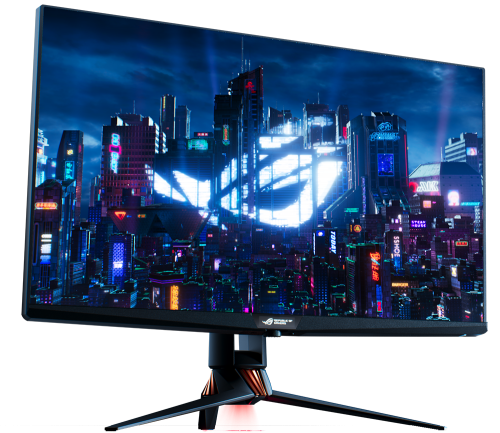
Image Source: ASUS
It’s safe to say that display brands are racing to claim the title to ‘world’s first miniLED-something’, and it’s getting snapped up fast.
We’re proud to say that we laid claim to “world’s first perovskite-enhanced miniLED monitor” at Display Week 2020. It’s our humble 32” prototype, but more on that later.
What are MiniLEDs?
A liquid crystal display (LCD) uses standard LEDs underneath an LCD panel; The LEDs are arranged either on the edges (in edge-lit displays) or positioned in a full array evenly spaced across the entire backlight unit (in direct back-lit displays). LEDs are typically over 1 mm in size. MiniLEDs are used in LCD displays the same way LEDs are, but are much smaller at just around 0.1-0.2mm in size and always arranged in a full array.
Key Benefits of MiniLEDs for LCD Displays
As miniLEDs are approximately 1/5 the size of LEDs, more miniLEDs can be assembled on the same size display and allows them to be divided/grouped into more ‘zones’ – from a few hundred zones in LED backlights to thousands of zones in miniLED backlights – for greater precision in dimming and illuminating selected parts of a screen simultaneously; Having finer control between shadows and highlights, also known as full array local dimming (FALD), creates deeper blacks, brighter colours, excellent contrast ratio and high dynamic range (HDR) for hyper-realistic images, movies and gameplay. Depending on the application, the number of miniLEDs in a device ranges from 5,000 to 82,000, and the number of dimming zones from 4,000 in notebooks to 9,000 in TVs.
MiniLED displays also provide higher brightness than displays with standard LEDs, thus allowing users to benefit from a brighter display of >1000 nits that’s also energy-efficient, extending the battery life of portable devices such as notebooks, tablets and mobile phones. The smaller size of miniLEDs also enables a slimmer product design for electronics with lighter, thinner form factors.
In short, miniLEDs bring the picture quality, brightness, power consumption and form factor of LCD displays a huge leap closer to OLED displays. Additionally, achieving high brightness without the need for high currents – which result in burn-ins and shortens the lifespan of OLED – makes miniLEDs an attractive backlight technology over OLED for displays.
So, if MiniLEDs are so great, why is OLED still around?
OLEDs enable the best colour performance with leading OLED displays offering wide colour gamut coverage of up to >99% DCI-P3 and >80% Rec.2020. The optical limitations of current LCD display architectures make it impossible for LCD displays to achieve OLED-level colour standards without new, emerging innovation.
The Perovskite Advantage for MiniLED Displays
Nanolumi’s perovskite colour enhancement film enable LCD displays with the purest, brightest, widest range of colours. When paired with miniLEDs, perovskite colour enhancement film bridges the brightness and colour performance gap between LCD and OLED by significantly boosting DCI-P3 and Rec. 2020 colour gamut coverage, leaving the industry with very little reason to choose OLED over LCD.
As you might have guessed, not all light-emitting advanced materials for colour enhancement films are made equal; The key characteristic with a direct impact on colour performance is the spectral purity of emissions, measured by full width at half-maximum (FWHM). The narrower the FWHM of a material, the more spectrally pure the emission leading to higher brightness and wider DCI-P3 and Rec. 2020 coverage.
Red Emitter & Green Emitter Technology Comparison
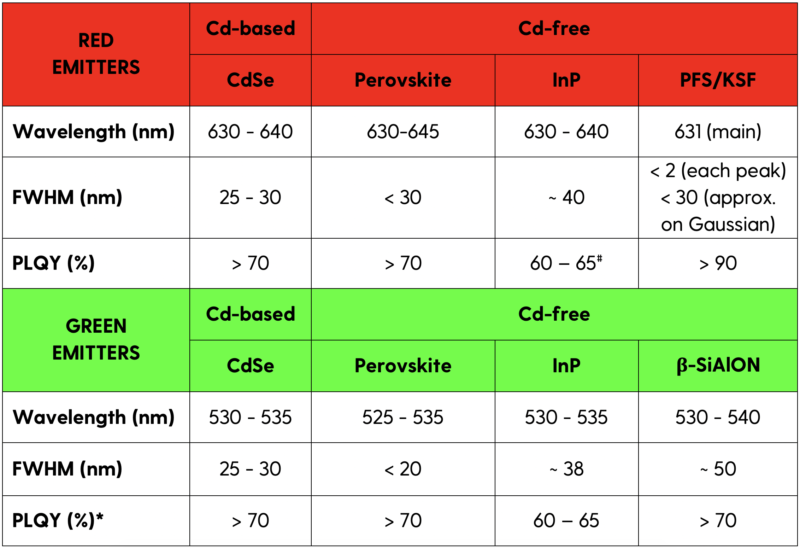
#Measured by Nanolumi’s method with commercially available film
*Measured by Nanolumi’s method with a calibrated laser excitation source and integrated sphere
At Display Week 2020, we showcased the world’s first 32” perovskite-enhanced 4K miniLED display prototype offering superior colour performance of >99% Adobe RGB, >99% DCI-P3 and >90% Rec. 2020 with standard brightness of 1200 nits and peak brightness of >2000 nits. Enabled by Chameleon® G Film, our green perovskite colour enhancement film, and red potassium fluorosilicate (KSF) phosphor-on-chip, this combination brings together the industry’s narrowest cadmium-free green emitter (FWHM <20 nm) and red emitter (FWHM <30nm) for truly the best colour performance and brightness in LED/LCD displays.
Nanolumi Chameleon® G Film in LED/LCD Monitor
While KSF phosphor-on-chip, also known as a “magenta” backlight, is a common LED package in the display supply chain, it would be challenging to offer KSF phosphor-on-chip for MiniLEDs given their smaller size. To accelerate the adoption of perovskite colour enhancement film in miniLED displays, we brought red KSF phosphor from on-chip to in-film to create a single hybrid red/green colour enhancement film that’s a simple drop-in solution for LCD displays with a blue backlight. Our hybrid red/green film enables miniLED displays with up to 100% Adobe RGB, 100% DCI-P3, 90% Rec. 2020 and peak brightness of >2000 nits; We’re supercharging miniLED displays with OLED colour performance and brightness with no burn-ins.
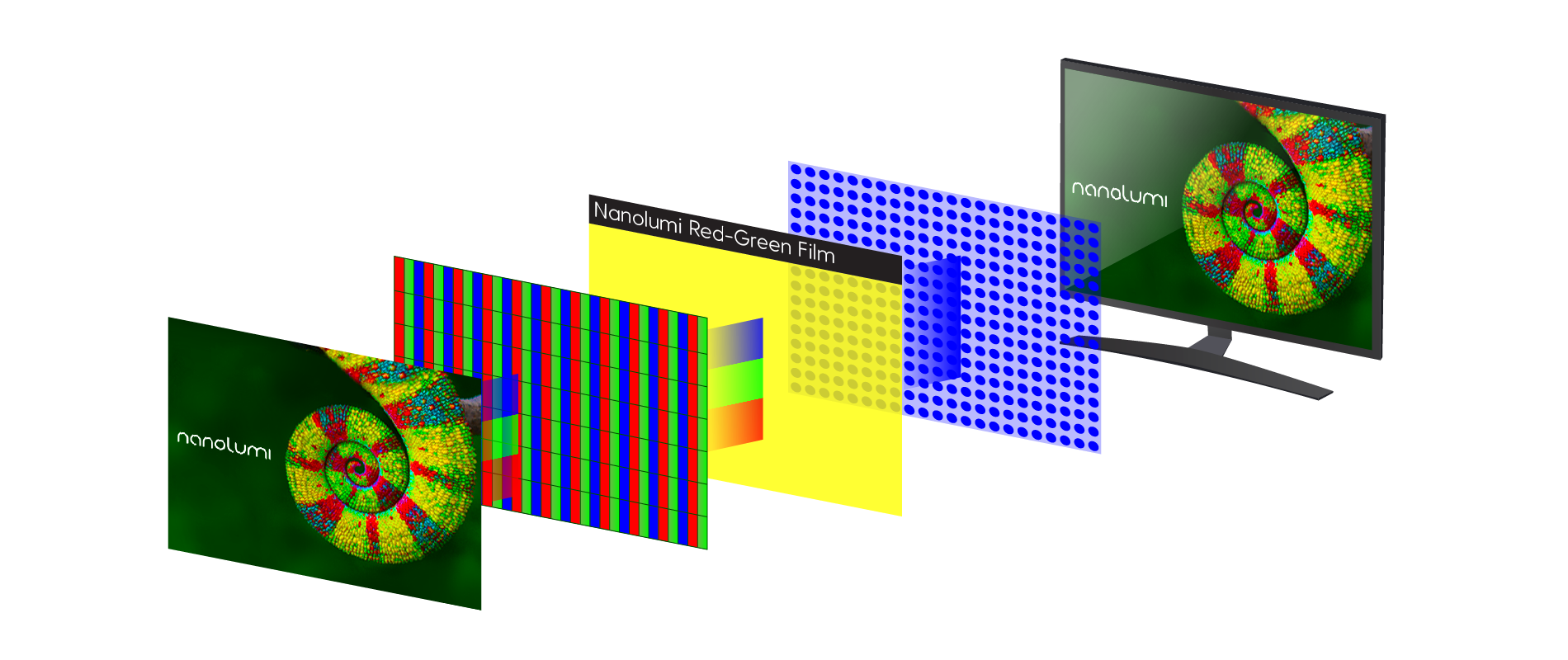 Nanolumi Hybrid Red/Green Film in MiniLED-LCD Monitor
Nanolumi Hybrid Red/Green Film in MiniLED-LCD Monitor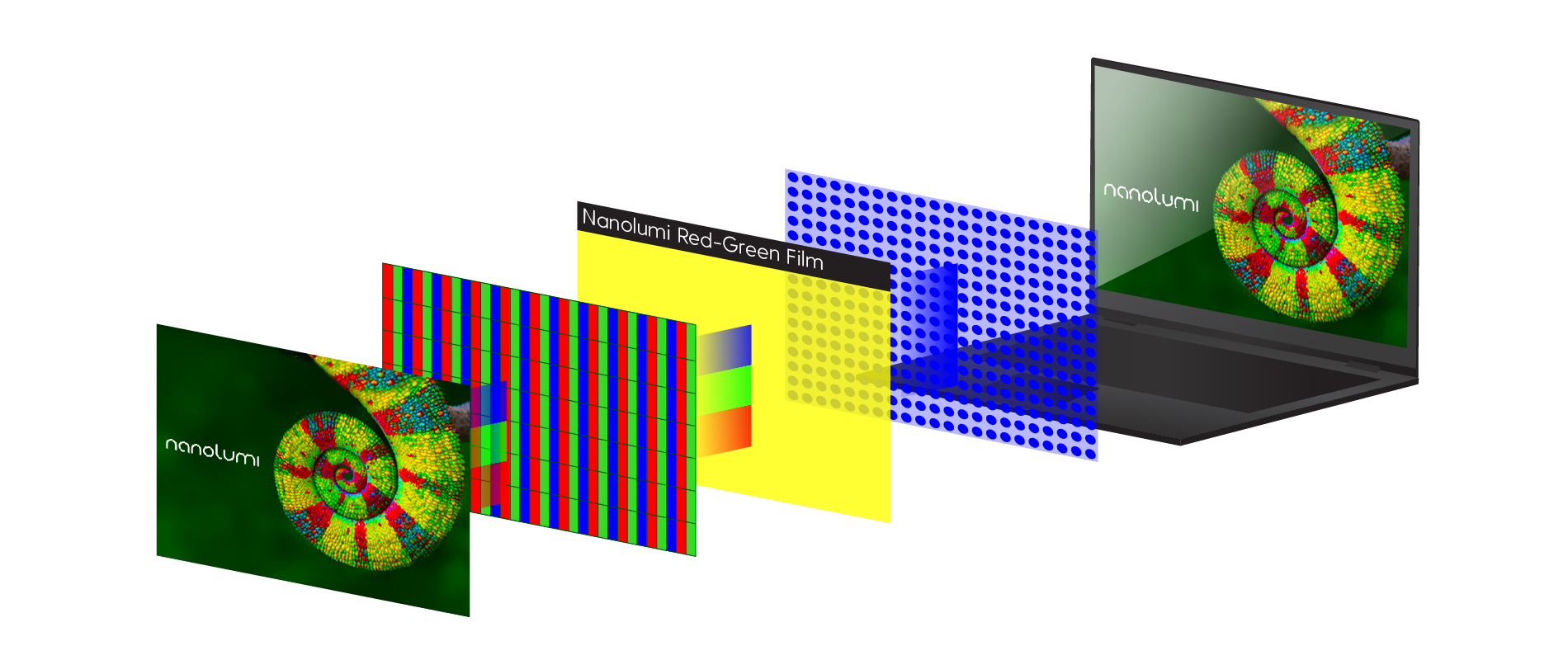
Nanolumi Hybrid Red/Green Film in MiniLED-LCD Notebook
MiniLED capacity will continue to expand as supply chain companies such as AUO, BOE, CSOT, Epistar, Innolux, Lextar, Macroblock, Nationstar, Refond, Sanan, Yenrich, and many others develop better solutions with display brands partnering them to speed up time-to-market. In addition, Apple is also reported to be releasing more miniLED products this year, including new MacBook Pro models, and the adoption of miniLED in their product line will have a positive impact on overall miniLED growth in the industry through cost reductions, and performance improvements.
